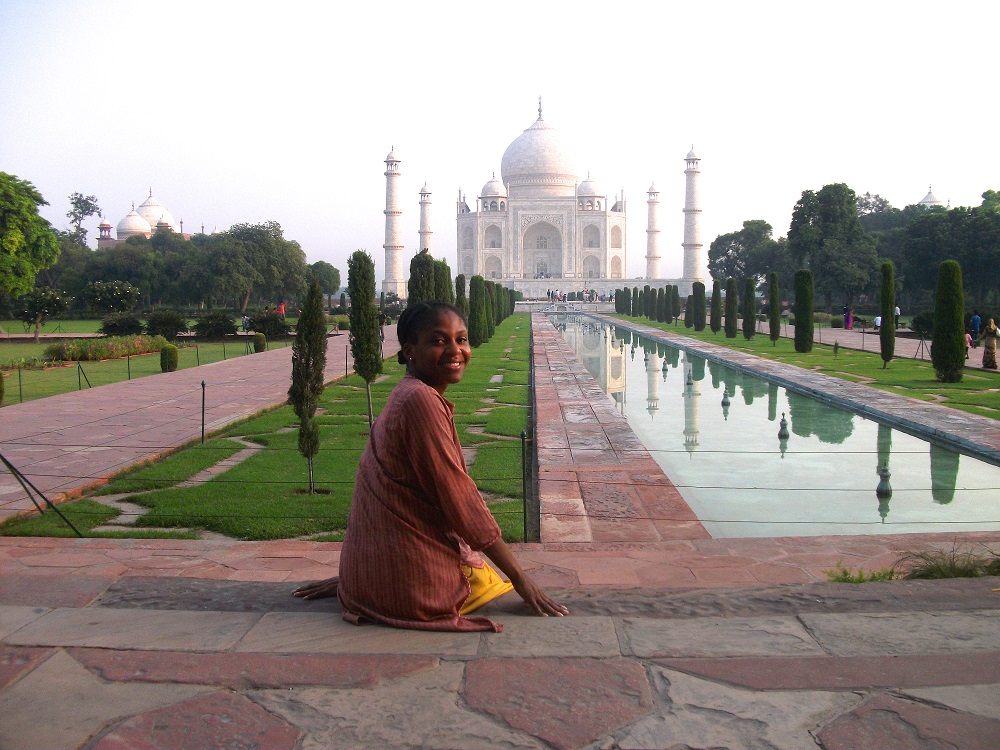Business in India
by Kiersa Sanders
Day 1 of our Self Employed Women Association (SEWA) visit involved meeting at SEWA headquarters, visiting two different garment worker communities, visiting a garment worker thread store, presenting our $2,000 donation to SEWA, and brainstorming solutions to attract more shoppers to the store. We ended the night at a traditional Guajarati restaurant for dinner.
At SEWA headquarters, we learned about why and how the group was formed. The organization’s main goal is to obtain full employment and self reliance for the women in the informal labor sector that it represents. From SEWA headquarters, we travelled to the thread store that our fundraising will support. It was a very small space but the shelves had a variety of different types of thread. We asked questions about the product, supplier, and customers to get a better idea of how the store could improve. My favorite part of the day was actually meeting the women that will be utilizing the thread store. Our group and about a dozen female seamstresses packed into two different sitting rooms and exchanged questions. We discovered that many of these women both worked nine-hour days and took care of the household duties. They earned 30-60 rupees per day or less than $1 US dollar.
They told us that girls have to start sewing at around eight or nine years old. Students often had to leave school to support the family income. In addition to this, even basic government school costs families at least $300 US dollars per year. Families that enrolled their children in school stood to lose money from lost hours at work as well as the tuition itself. This part of the visit was pretty disheartening and made me reflect on my own education. Growing up wasn’t all roses, but at least school was free. Performing well at school opened up opportunities for me to exceed what my mom had been able to accomplish financially. Because many of these women are at the whim of the garment companies that contract for their services, many families get stuck in a cycle because they have to depend on the children to bring in the necessary income. I’m thankful that I have had the opportunity to attend school and become eligible for different job opportunities.
There is a pretty stark contrast between SEWA Day 1 and SEWA Day 2. We began Day 2 at the Gandhi museum which was located where he lived for part of his life. I had no idea that Gandhi was born in Guajarati. The museum was extremely peaceful. As I walked through the exhibit I learned so much that I never knew about him. He studied law in England, took his first position in South Africa, where he experienced discrimination for the first time. Without Gandhi’s teachings, I wonder where I would be right now. Many of his philosophies inspired the peaceful strategies of the Civil Rights Movement that helped make it successful.

